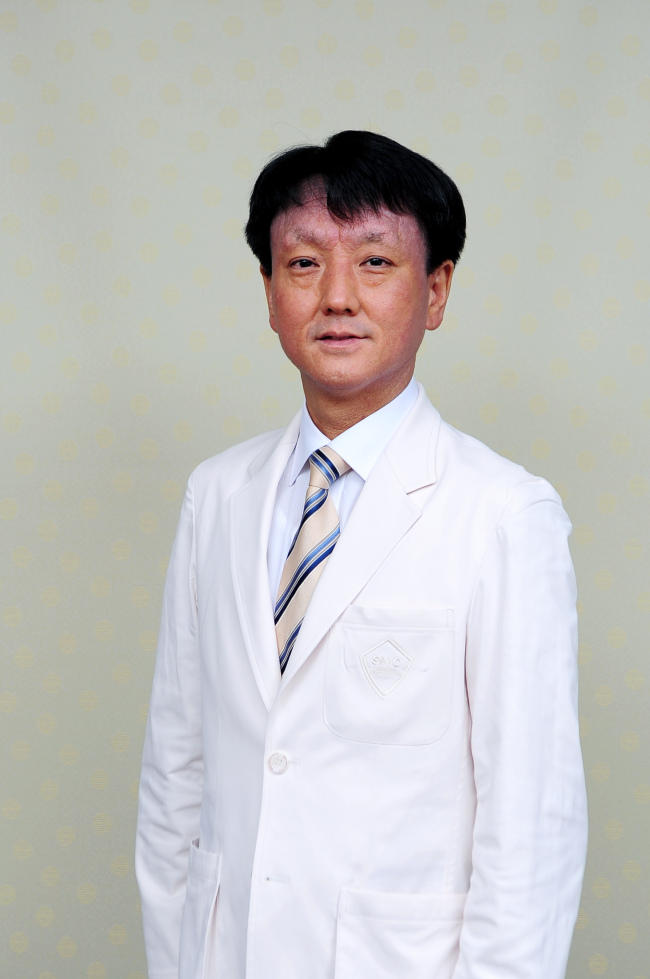 |
Illustration by Park Gee-young |
Office worker Mr. A often felt stiffness of the neck, a heavy sensation on the shoulders as if burdened by a rock, headache, eye pain, and weakness and numbness of his arms after office work, computer work, reading on the couch or driving for a long time.
He decided to see a doctor because he was worried that it could be a stroke, cervical disk prolapse, or some other serious condition. After many tests and examinations he asked the doctor what the diagnosis was.
The doctor told him that there weren’t any problems and that he should not worry. Although he was relieved to hear this, he was still somewhat uncomfortable with the fact that he had frequent inexplicable pain.
The majority of these symptoms are usually due to myofascial pain syndrome. We have many muscles that move the joints, which are covered by a clear sheath called the fascia. Pain can be caused by shortening and folding of these fascias around the muscles which can radiate to other parts of the body. The pain is generally caused by a specific point, and myofascial pain syndrome refers the associated pain and other related symptoms with the muscle pain. The pain often arises in the back of the neck, shoulders, back and the lower back, which are muscles that are constantly under tension. These muscles are more prone to pain, because they can be deficient of oxygen and nutrients. The pain occurs in areas of hardened muscles, and pressing on these points can lead to not only pain there, but pain or numbness in other parts of the body.
For example, a pain trigger point in the neck can lead to headache, pain around the eyes, tinnitus and dizziness, whereas trigger points in the shoulders can lead to numbness or weakness in the arms and hands. Trigger points in the lower back or the buttocks can lead to numbness in the hips and the legs.
There are several causes of myofascial pain syndrome, but the most common causes are stress and inappropriate posture. Many patients with myofascial pain syndrome tend to lean back in their chair when using the computer, reading or driving, or have slouched shoulders or forward-stretched necks.
Prolonged duration of such postures leads to fatigue of the muscles of the neck and the shoulders, leading to pain. If severe, it can produce a pain trigger point. A trigger point in the lower back can be produced if leaning back in a chair for a long time, or lifting something heavy using one arm for a long time.
Many people are under a lot of stress in the rapidly changing, unpredictable and complex society where we are exposed to competition. Sometimes, people try to relax by going away over the weekend or enjoying leisure activities, but these free-time activities themselves can cause stress.
Continued stress leads to tension in the muscles of the head, neck and the shoulders, which can produce pain trigger points.
The symptoms of myofascial pain syndrome are similar to that of disk prolapse of the neck or the lower back, which can lead to misdiagnosis. Therefore, accurate examination and tests are necessary. However, there is no method of testing for pain trigger points, and it relies on the specialist doctor.
Delayed treatment of myofascial pain syndrome can lead to spreading of the muscle pain trigger points, leading to a greater area of pain and chronic pain, which can affect the patient’s lifestyle. It can easily recur even after treatment. Therefore, it is important to undergo the right treatment, and make efforts to prevent its recurrence. The treatment consists of medication, stretching, injections and physiotherapy. However, the effect of the treatment is limited by continuing poor posture or lack of physical exercise.
Therefore, it is extremely important that the patient maintains correct posture and does continuous stretching exercises. When sitting, you should stretch your back straight, and pull the chin toward the chest. Make sure that your head does not bend more than 15 degrees from the neck.
Rest your elbows on an armrest. It can also help to adjust the height of the chair or use a footrest.
Stretching exercises vary depending on the muscles affected. For example, if there is pain in the right side of the neck and shoulders, sit on your right hand and stretch the lower back and the neck. Use your left hand and wrap it around your head to touch the top of your right ear and pull your neck toward the left. Pull for about 20 seconds with a constant force. When sitting down for a long time, stand up once an hour for light exercises.
 |
Sung Duk-hyun |
By Sung Duk-hyun
The author is a doctor at the Department of Physical Medicine and Rehabilitation at Samsung Medical Center and a professor at Sungkyunkwan University School of Medicine. ― Ed.









![[Today’s K-pop] Blackpink’s Jennie, Lisa invited to Coachella as solo acts](http://res.heraldm.com/phpwas/restmb_idxmake.php?idx=644&simg=/content/image/2024/11/21/20241121050099_0.jpg)